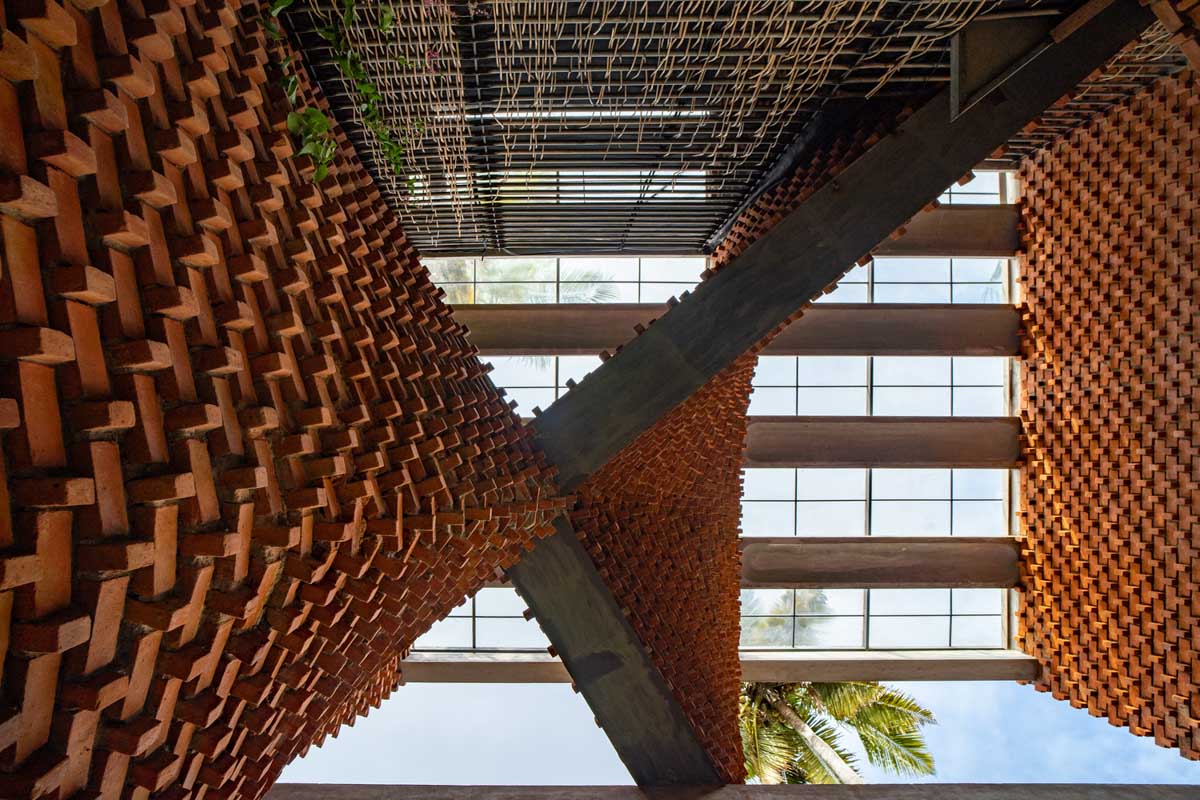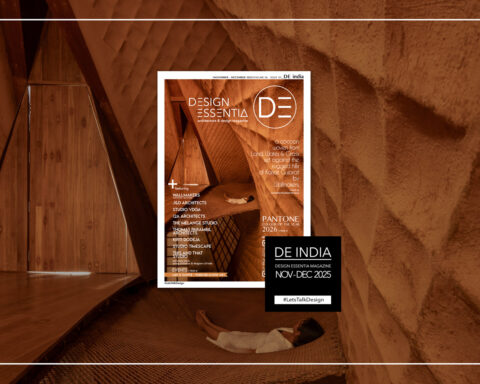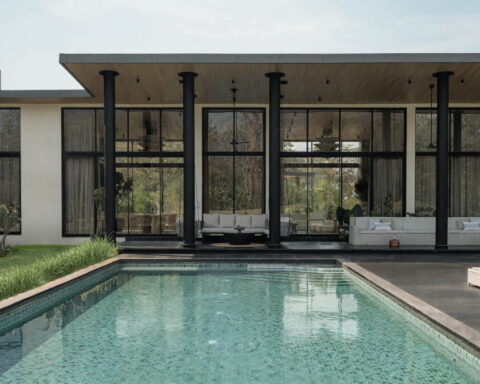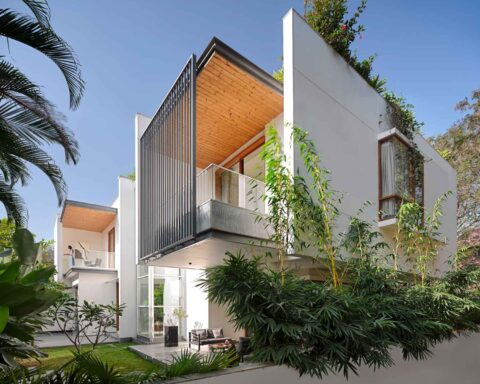This residence in Thiruvananthapuram features the “Last of the Mohicans” fired bricks as an ode to Ar. Laurie Baker with spaces that are made beautiful by the pure geometry and patterns created by the walls that seem to be coming alive and pirouetting around.
Project Name : Pirouette House
Project Location : Thiruvananthapuram, India
Project size : 196 sq. m.
Architects/Designer : Wallmakers
Project Status : Built
Photographer: Jino Sam.
Text description by the architects.
Located smack in the middle of an urban and crowded locale of Trivandrum, the site was a small plot that was being suffocated by other residential projects from all four sides. The idea of this residence was to have an inward facing house with all its spaces opening into a funnelling central courtyard. The house is aligned in the East-West direction with openings facilitating for maximum cross-ventilation.
In the context of the city of Trivandrum that stands as a testimonial to many of Ar.Laurie Baker’s masterpieces, it seemed fit to modify one of his own introductions, the Rat trap bond masonry technique in this site which didn’t offer the opportunity for soil excavation or for making mud blocks. Keeping in mind that Brick kilns in Trivandrum is a dying industry with people opting out for wire-cut machine made bricks, this was also an attempt to promote this local agriculture based industry that is on the brink of extinction.
The Rat trap bond is a brick masonry method of wall construction in which bricks are placed in vertical position instead of conventional horizontal position and thus creating a cavity within the wall that increases thermal efficiency, cuts down on the total volume of bricks used and is ideal for concealing structural members and service ducts. The idea was further developed to form a series of slanting walls that danced left and right, converging only to support the ferro-cement shell roof. Each staggered wall has been tailor-made to suit the issue of deficiency in space that this residence posed, aiming to create larger volumes and a feeling of privacy.
The Rat trap bond is a brick masonry method of wall construction in which bricks are placed in vertical position instead of conventional horizontal position and thus creating a cavity within the wall that increases thermal efficiency, cuts down on the total volume of bricks used and is ideal for concealing structural members and service ducts. The idea was further developed to form a series of slanting walls that danced left and right, converging only to support the ferro-cement shell roof. Each staggered wall has been tailor-made to suit the issue of deficiency in space that this residence posed, aiming to create larger volumes and a feeling of privacy.
Scaffolding pipes left behind from the construction stage soon were reused to form the central staircase and the grillwork. Keeping in mind the principle of discarding nothing as ‘waste’ the wooden planks were also pieced together to form part of the flooring in the living areas. Cane has been acquired from the neighbourhood, treated and wound around the grillwork to create subtle screens for privacy and for various furniture.
//Materials used in Construction:
1. Fired bricks for Rat Trap bond masonry – Rat trap bond is a brick masonry method of wall construction introduced by Laurie Baker in Kerala, in which bricks are placed in vertical position instead of conventional horizontal position and thus creating a cavity (hollow space) within the wall that increases thermal efficiency and cuts down the number of bricks.
2. Waste wood – Cut wooden scrap pieces have been joined to panel a part of the flooring.
3. MMT Ferro-cement shells– These wafer-like structures are steel reinforced arched shells with effective thickness of 2.5cm and they take equal load of respective R.C.C slabs. They effectively reduce the overall cement consumption by 40% and steel consumption by 30%.These replace the R.C.C Slab in roofing as they are as strong as 1200 kg/m2.
4. Discarded Scaffolding pipes for Staircase and Grillwork – The staircase and the grillwork of this house has been made entirely out of scrap scaffolding pipes that have been welded in place.
5. Oxide – Floor and selected walls have been finished with grey and yellow oxides.
6. Cane – Cane has been treated and woven together in-between the grillwork to act as a partial screen for privacy.
The Pirouette House features the “Last of the Mohicans” fired bricks as an ode to the stellar practice of Laurie Baker with spaces that are made beautiful by the pure geometry and patterns created by the walls that seem to be coming alive and pirouetting around.
Photographer: Jino Sam.
PROJECT CREDITS
Architecture: Wallmakers.
Architect In Charge: Vinu Daniel
Design Team: Oshin Mariam Varughese, J.M.Srivarshini, Gayatri Maithani, Swathi Raj, Keerthi Kausalya, Shiuly Roy, Neeraj S. Murali, Dhawal Dasari
Interns : Nihaal Gafoor, Smit Zalavadia, Apoorva Goutam, Harshita G Tophakhane, Manav Muralee, Rohith Krishna, Bharati Gupta, Yash Sukhwani, Neeraj Viswam
Client: Mr.Kiran
Engineering: Adcons Infrastructure Private Limited
Landscape : Vinu Daniel and team
Fabrication Team: Kunjumon James and team -J.K steels
Carpenter : Sarath Prasad and team, Shivadas
Masons : Ezhil and team, Deepu and team





























